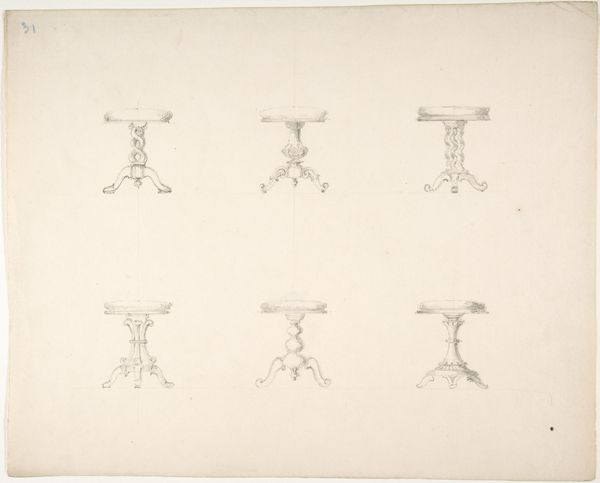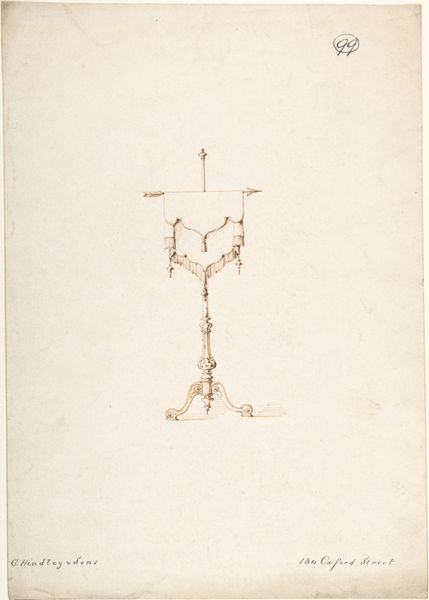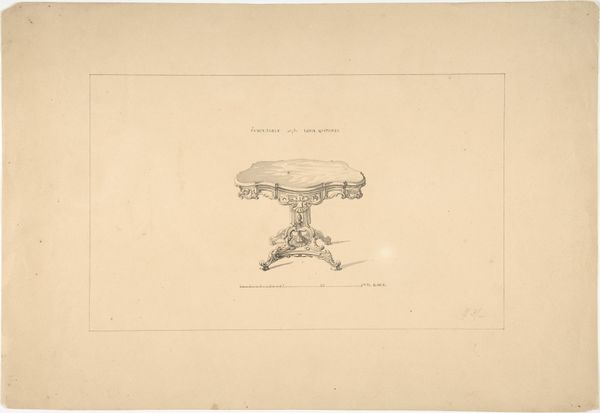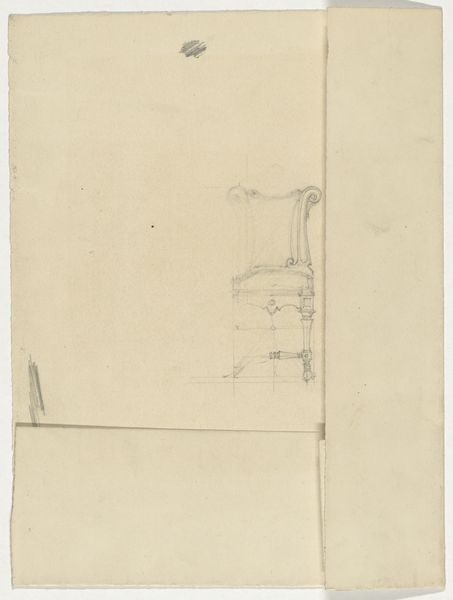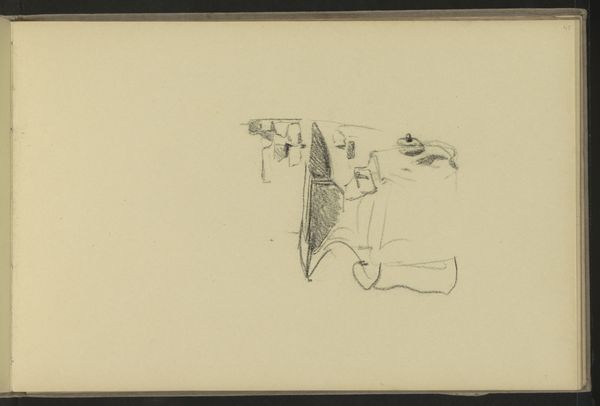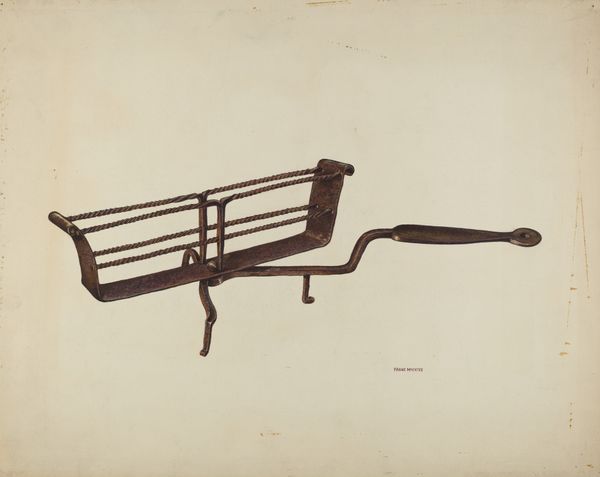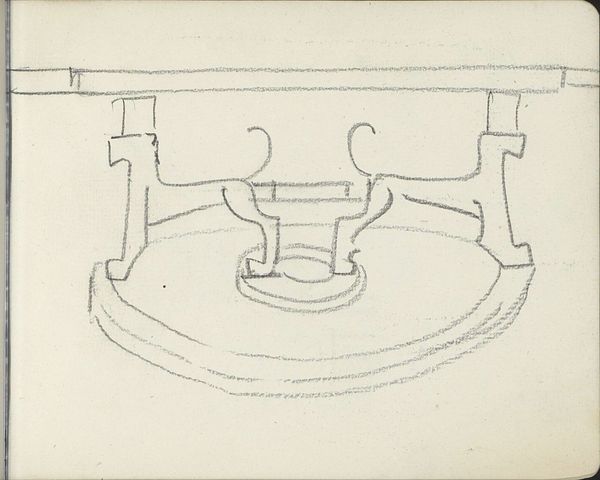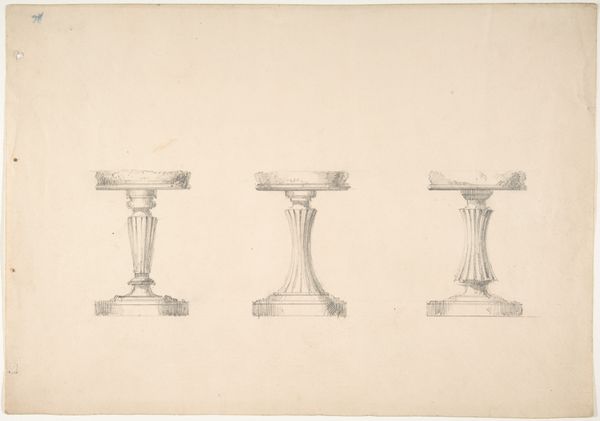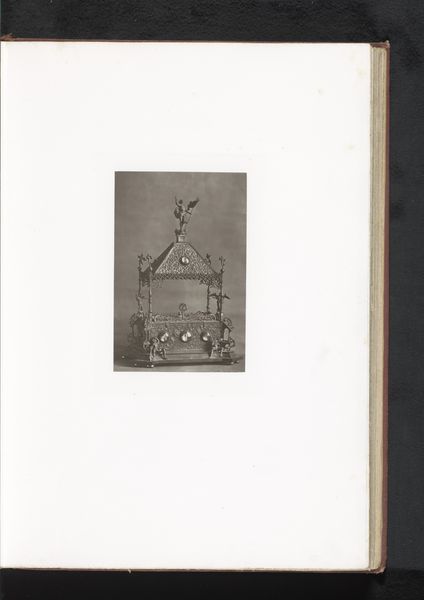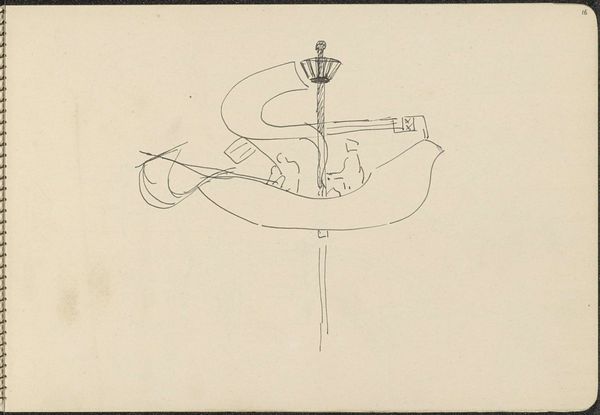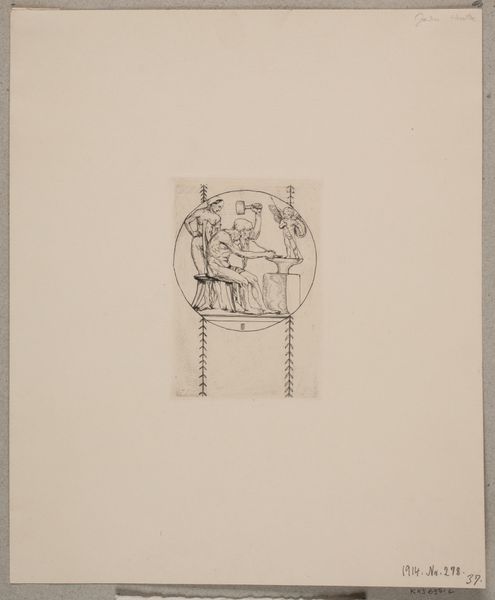
drawing, print, pencil
#
drawing
#
table
#
neoclacissism
#
light pencil work
# print
#
form
#
pencil
#
line
#
realism
Dimensions: sheet: 8 11/16 x 12 5/16 in. (22 x 31.2 cm)
Copyright: Public Domain
Editor: Here we have an interesting design! It’s an undated, unsigned pencil drawing for a “Round Pedestal Table on Casters,” placing its creation sometime between 1800 and 1850. It's at the Met. It feels almost stark, yet there is something inviting about its simple utility. How do you interpret this work through a wider lens? Curator: The simplicity you point out is key. It’s neoclassical, but it also exists on the cusp of the Industrial Revolution. What happens when design becomes less about opulent display for a select few, and more about efficient production? Does this shift redistribute power, even subtly? Editor: I never considered that. It's just a table! But I guess, who gets to have a table, and what kind of table, really matters, right? Curator: Exactly. Think about the function of this table, too. The casters suggest mobility, a potential shift in how space is used. Does this table democratize interior space? Or does it simply cater to a different kind of elite, one who values flexibility and convenience? Is function more important than embellishment, and what message does this convey? Editor: That's a powerful way of looking at it. So, this design, even though it seems straightforward, reflects significant social and political changes in its own subtle way? Curator: Precisely. Every object carries cultural information. We have to ask, whose values are being reflected, and whose are being marginalized, even in something as seemingly mundane as a table design. Editor: This makes me realize there's more than just aesthetics in furniture design. Curator: Yes! Art and design never exist in a vacuum. Recognizing these connections allows us a richer understanding.
Comments
No comments
Be the first to comment and join the conversation on the ultimate creative platform.
